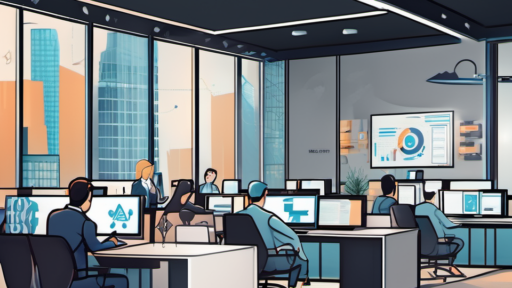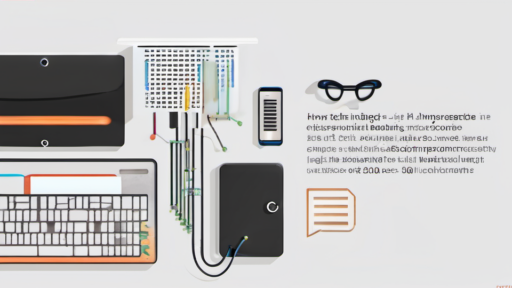You’ve invested in the latest security tools, built firewalls, and implemented multi-factor authentication. But what if that isn’t enough? What if critical security gaps remain hidden, lurking in the shadows, waiting to be exploited? It’s not enough to simply check boxes; it’s about achieving true security resilience. We need to go deeper, dive into the intricate web of your network and uncover those hidden vulnerabilities. Are you ready to take your security to the next level?
Understanding Your Network: The Foundation of Secure Growth
Before we can patch vulnerabilities, we need to understand them. And to understand them, we need a deep understanding of your entire network, from your physical infrastructure to your cloud deployments and everything in between. It’s like understanding the human body: you need to know how all the systems work together to identify weaknesses.
Mapping Your Network: The First Step to Security
Network mapping is the process of documenting your entire network, from hardware and software components to applications and data flows. Think of it like creating a detailed blueprint of your organization’s digital infrastructure. This meticulous process gives you a clear picture of your assets, the relationships between them, and how data flows through the network. But network mapping isn’t a one-time task.
Why Network Mapping is Essential
- Vulnerability Discovery: By understanding your network, you can identify potential entry points for attackers. Is a specific server outdated? Are your web applications vulnerable to known exploits? This crucial step helps you prioritize your security investments.
- Threat Analysis: Once you’ve identified potential vulnerabilities, you can then analyze their potential impact. Which vulnerabilities pose the biggest risks to your business operations, data, and reputation? This allows you to develop a focused mitigation plan.
- Risk Mitigation: Armed with this knowledge, you can design comprehensive security policies and implement safeguards to address the most significant vulnerabilities.
- Incident Response: When a security incident occurs, you need to be able to quickly determine its scope and impact. A detailed network map will allow you to pinpoint the affected systems, quickly isolate the issue, and begin the remediation process.
Penetration Testing: Probing Your Defenses
Think of a network penetration test as a simulated attack. A team of highly skilled security professionals, armed with ethical hacking tools and techniques, will attempt to penetrate your network to identify vulnerabilities. They will simulate real-world attack scenarios, exploiting potential weaknesses and evaluating your defenses.
The Importance of a Rigorous Penetration Test
- Uncover Hidden Vulnerabilities: Even with a comprehensive network map, hidden vulnerabilities can slip through the cracks. Penetration tests provide an independent, unbiased assessment of your security posture, revealing even the most subtle vulnerabilities.
- Real-World Scenarios: Unlike vulnerability scans that look for known weaknesses, penetration tests focus on how an attacker would actually exploit your network. It’s like taking a security audit to the next level.
- Strategic Security Enhancement: The results of a penetration test provide invaluable insights that can guide you to enhance your security posture.
The Power of Expertise: Beyond Automation
While tools can play a critical role, they are just one part of the equation. Real, impactful security requires the knowledge, experience, and strategic thinking of technical experts. Think of these experts as your network’s guardians, dedicated to uncovering threats, closing loopholes, and fortifying your digital fortress.
Expert Eyes: A Human Touch for Effective Security
Expert knowledge adds an irreplaceable layer of security. While automated vulnerability scanning and penetration tests can help identify common issues, they can’t always anticipate or understand nuanced attacks. A human analyst can assess the bigger picture, recognizing the complex interplay between technology and human behavior.
How Expert Knowledge Elevates Your Security
- Advanced Threat Detection: Technical experts can analyze complex data, identify subtle anomalies, and anticipate emerging threats. They’re not limited by pre-programmed rules but are able to identify and respond to previously unseen attacks.
- Contextual Awareness: A human analyst understands the specific needs and challenges of your business, tailoring security strategies accordingly. They are more adept at identifying high-risk vulnerabilities based on your industry, infrastructure, and data sensitivity.
- Strategic Guidance: Experts can advise on the best security practices, implement proactive measures, and help you build a holistic security program.
- Troubleshooting and Incident Response: When security incidents do occur, experts can analyze complex log files, identify the root cause of the issue, and provide immediate solutions to minimize damage and mitigate further risks.
Building Your Security Strategy: The Path to Resilience
You’ve gone through the crucial steps: understanding your network, conducting rigorous penetration tests, and tapping into the power of technical expertise. Now it’s time to implement the results and build a robust, future-proof security strategy.
Prioritizing Risks and Implementing Actionable Steps
Every business is different. What works for one organization might not be suitable for another. Therefore, creating a tailored strategy is key.
The Importance of Tailored Security Planning
- Understanding Your Business: Security strategies must be aligned with your specific business objectives, data sensitivity, and industry regulations.
- Risk Management: Prioritize the vulnerabilities with the highest potential impact and allocate your resources accordingly.
- Continual Assessment and Improvement: Security is an ongoing process, requiring continuous monitoring, testing, and adaptation to the ever-changing threat landscape.
Key Takeaways:
- A thorough understanding of your network is crucial to uncovering vulnerabilities.
- Network mapping provides a foundation for security and helps prioritize resources.
- Penetration testing offers an invaluable perspective, mimicking real-world attacks.
- Expert knowledge adds a critical layer of security, supplementing the power of automation.
- A tailored security strategy, prioritizing risks and implementing actionable steps, leads to true resilience.






